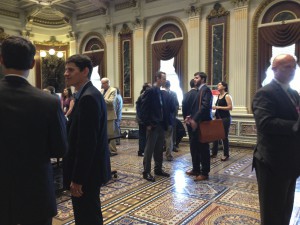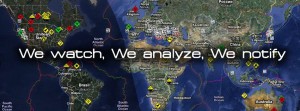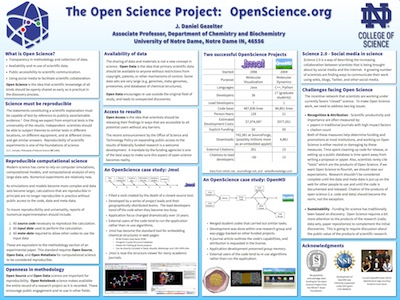HEALPix (Hierarchical Equal Area isoLatitude Pixelation of a 2-sphere), can refer to either an algorithm for pixelation of the 2-sphere, or the associated software package available under the GNU GPLv2 license. Among other features, the HEALPix software implements extremely efficient Spherical Harmonics Transforms and allows quick and accurate simulations and analysis of diffuse signal on the sky (such as the Cosmic Microwave Background anisotropies). Visualization tools are also available.
Find HEALPix at: http://healpix.sourceforge.net
Categories
- Conferences (3)
- education (10)
- Fun (58)
- Meta (12)
- Open Access (10)
- Open Data (13)
- open science (34)
- Policy (48)
- Science (135)
- Software (633)
- Acoustics (3)
- Engineering (1)
- Physical (1)
- Speech Communication (2)
- Structural (1)
- Anthropology and Archaeology (3)
- Artificial Life (9)
- Astronomy (21)
- Aviation and Aeronautics (2)
- Chemistry (131)
- Analytical (4)
- Atmospheric (1)
- Biochemistry (6)
- Biophysical (3)
- Chemical Information (3)
- Crystallography (2)
- Electrochemistry (1)
- Molecule Viewers and Editors (39)
- Organic (2)
- Synthesis (1)
- Periodic Tables (3)
- Physical (1)
- Kinetics (1)
- Polymers (1)
- Spectroscopy (9)
- NMR (5)
- Surfaces (1)
- Theoretical and Computational (45)
- Cognitive Science (3)
- Neural Networks (2)
- Complex Systems (2)
- Computer Science (22)
- Algorithms And Computational Theory (2)
- Artificial Intelligence (4)
- Data Communication (4)
- Information Retrieval (1)
- Knowledge Discovery and Data Mining (3)
- Languages (1)
- Fortran (1)
- Measurement and Evaluation (1)
- Simulation and Modeling (2)
- Software Engineering (2)
- Symbolic and Algebraic Manipulation (1)
- Earth Sciences (19)
- Geology and Geophysics (5)
- Hydrology (5)
- Meteorology (1)
- Oceanography (3)
- Energy (3)
- Engineering (24)
- Forensics (2)
- Geography (12)
- Information Technology (1)
- Life Sciences (60)
- Bioinformatics (34)
- Ecology (5)
- Evolution and Population Genetics (3)
- Statistical (1)
- Theoretical (1)
- Genetics (9)
- Population (1)
- Medical Sciences (7)
- Physiology (2)
- Linguistics (2)
- Mathematics (108)
- Abstract Algebra (9)
- Combinatorics (1)
- Differential Equations (17)
- Fluid Dynamics (7)
- Ordinary (3)
- Partial (7)
- Dynamical Systems (4)
- Education (1)
- Geometry (3)
- Linear Algebra (26)
- Number Theory (6)
- Numerical Methods (5)
- Optimization (12)
- Probability (1)
- Set Theory (1)
- Statistics (8)
- Topology (1)
- Measurements and Units (3)
- Nanotechnology (2)
- Physics (30)
- Astrophysics (1)
- Atomic and Molecular (1)
- Computational (2)
- Condensed Matter (4)
- Dynamics (2)
- Fluid (1)
- High Energy (4)
- Magnetism (1)
- Materials (1)
- Nuclear (4)
- Optics (5)
- Plasma (1)
- Required Reading and Other Sites (25)
- Space (3)
- Tools (56)
- Numerical Libraries (8)
- Random Number Generators (2)
- Visualization (18)
- 2D Plotting (8)
- 3D Plotting (2)
- Acoustics (3)
- Uncategorized (4)

 There was a second group who got the opportunity to present at this event at a poster session later that day. I haven’t seen the list publicized elsewhere, but these are some sharp folks who deserve recognition for their work. I’m going to highlight some of these in the coming week. Here’s the list of posters:
There was a second group who got the opportunity to present at this event at a poster session later that day. I haven’t seen the list publicized elsewhere, but these are some sharp folks who deserve recognition for their work. I’m going to highlight some of these in the coming week. Here’s the list of posters:

